
pokerstars ‘Alahas’ author Gigi Bermejo encourages self-discovery through jewelry
Antique collector, jewelry designer, and ‘Alahas’ author Gigi Bermejo advocates for jewelry as a means to Philippine identity, heritage, and history “For my children, my children’s children, and the future generations they represent.” T
-
Antique collector, jewelry designer, and ‘Alahas’ author Gigi Bermejo advocates for jewelry as a means to Philippine identity, heritage, and history
“For my children, my children’s children, and the future generations they represent.” This poignant quote marks the beginning of “Alahas,” the recently released book by Maria Angelica Santos “Gigi” Bermejo or more affectionately known to many as “Tita Gigi.”
The book was successfully released during Art Month. First, at a festive party at Comuna then later at a well-attended launch at the Ayala Museum.
View this post on InstagramNeither a run-of-the-mill history textbook nor a coffee table book, “Alahas” references centuries of jewelry in the Philippines. Under Bermejo’s creative direction, the pages incorporate unique design elements peppered with striking photos and detailed illustrations.
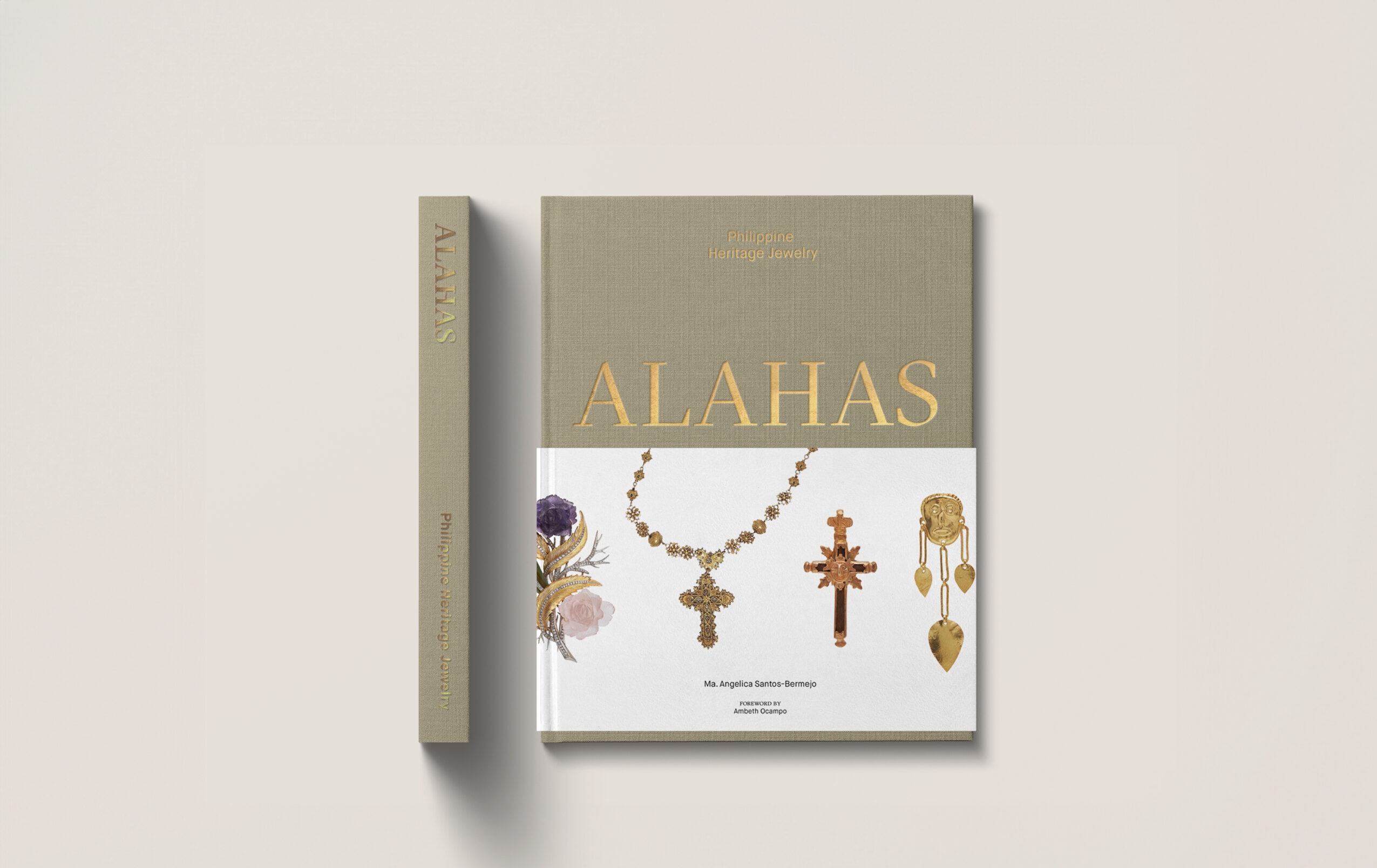 ‘Alahas: Philippine Heritage Jewelry’
‘Alahas: Philippine Heritage Jewelry’
 Samples of the unique illustrations that fill the book.
Samples of the unique illustrations that fill the book.
The text includes ‘situationers’ or fictional stories that place each chapter in the atmosphere of the time. Each entry brims with historical information, mixed in with moving quotes and the author’s personal anecdotes.
She was guided by historian Ambeth Ocampo and Dr. Olivia Anne Habana, who provided a theoretical framework, while editing was courtesy of Renan Prado. Besides the glossary of jewelry terms, the book holds an exhaustive bibliography, which Ocampo describes in his foreword as something that “could be submitted for a graduate degree in History or Philippine Studies.” Bermejo ultimately gets close to the readers as she introduces and wraps up the book with a personal message to the youth.
With all these elements together, “Alahas” brings history to life through the glittering form of jewels.
The conception of the book came about at the birth of her granddaughter Mia. Amid the pandemic, it prompted her to reassess her priorities, shed her cloak of privacy, and consider how she can make a meaningful impact beyond her family.
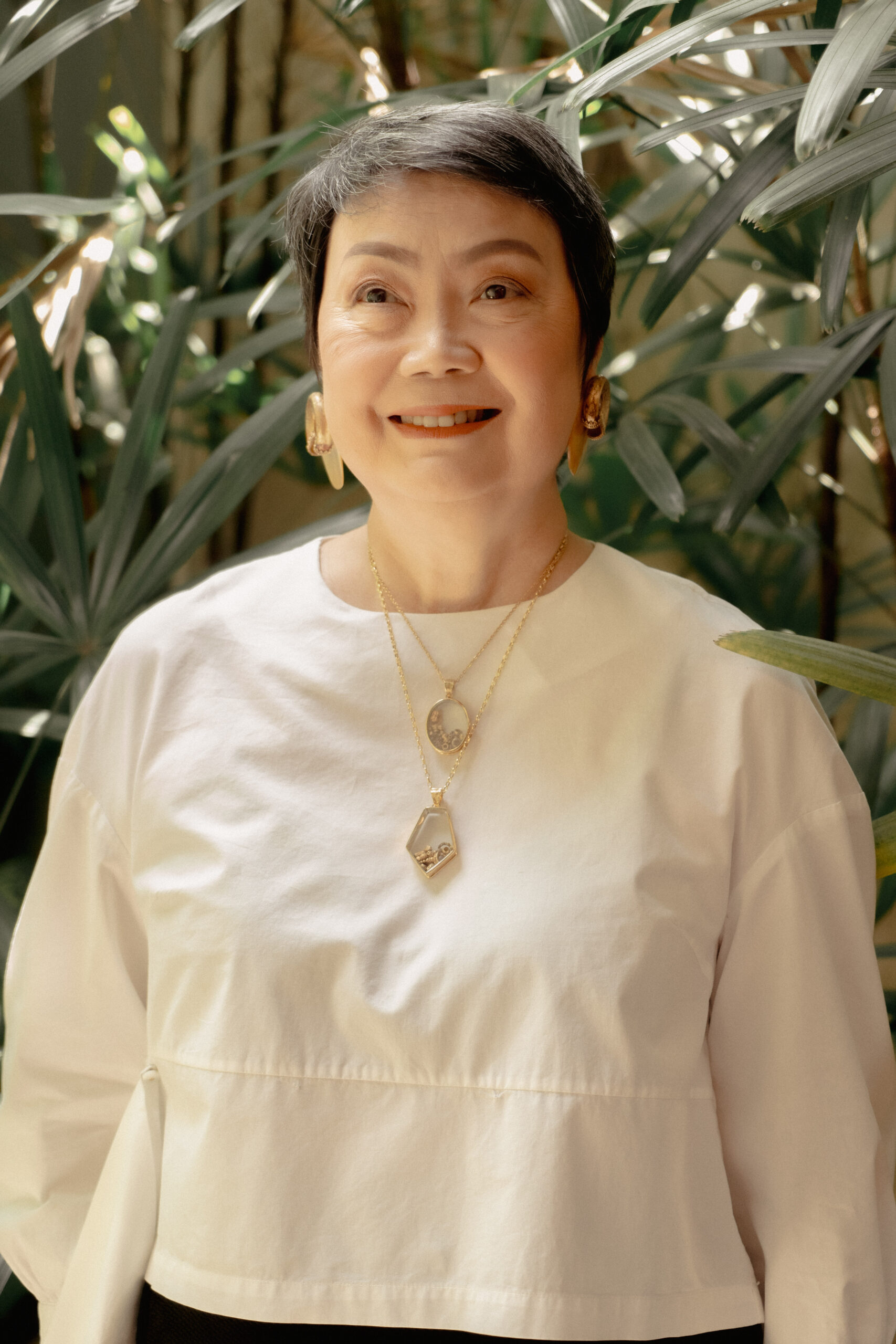 Gigi Bermejo. Photo: JT Fernandez.
Gigi Bermejo. Photo: JT Fernandez.
I came to know Tita Gigi through the fictional “situationers,” which we co-wrote together, a collaboration meant to fulfill her goal to effectively communicate with the youth. “The inspiration behind the creative direction of the book ‘Alahas’ stemmed from a desire to engage and captivate the youth audience,” she says. “I wanted to present Philippine heritage jewelry in a fresh and dynamic way that would resonate with younger generations.”
As we sat together over calamansi juice and biscuits from Negros province, I witnessed Tita Gigi’s sweetness and sudden gushes of passionate lessons on antique jewels. Leafing through rare history books, she would tell stories that connect to the jewelry on the table, knowing the complex origins of a bead or a gem at a glance.
Besides being a fellow writer and a purveyor of history, Bermejo brims with energy and vitality, ultimately seeking to impart her love for not just jewels but also the history of the Philippines.
“I wanted to present Philippine heritage jewelry in a fresh and dynamic way that would resonate with younger generations.”
From an antique collector to a seasoned jewelry designerBermejo’s family’s affair with jewels traces back to her roots. Her great-great-great-aunt, Maria Concepcion Luna-Reyes, fondly called Lola Neneng, operated a jewelry store at 305 Misericordia Street right in the heart of Manila’s bustling business district in 1927. It was called La Sampaguita.
Bermejo’s own journey with jewelry began in 1985 when she met Lourdes Dellota, who owned a popular antique shop in Jaro, Iloilo. On their first meeting, they dove into historical archives and once-buried treasure. Together with her husband Jun, they collected santos, religious imagery, colonial furniture, and oriental ceramics.
It was also here where Bermejo strung her first necklace of pre-colonial beads. And the rest was history.
Bermejo recounts the joys and frustrations of collecting jewelry, working with runners in Ermita who would risk their lives excavating in landslides. She also recalls hard-earned lessons, working with runners who never came back with down payments or the disappointments after finding counterfeit treasures.
READ MORE: Nicole Whisenhunt bridges time through the art of jewelry
Amid all these, Filipino jewelry design stands out for its diverse range of influences that blend Western and Eastern styles. For example, she points out that traditional pre-colonial beads with animistic origins slowly seeped into Spanish colonial-era necklaces.
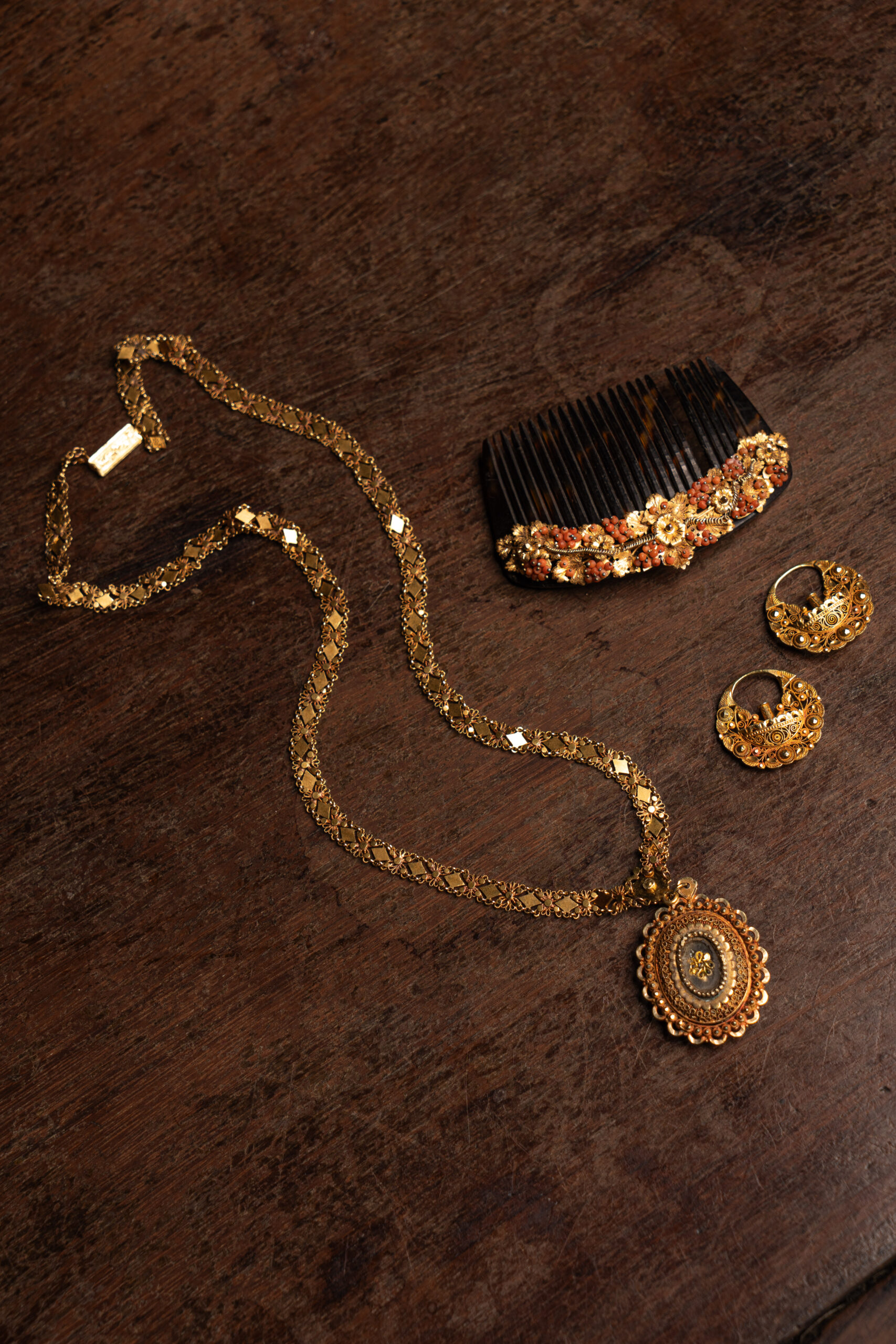 Traditional Spanish colonial jewels.
Traditional Spanish colonial jewels.
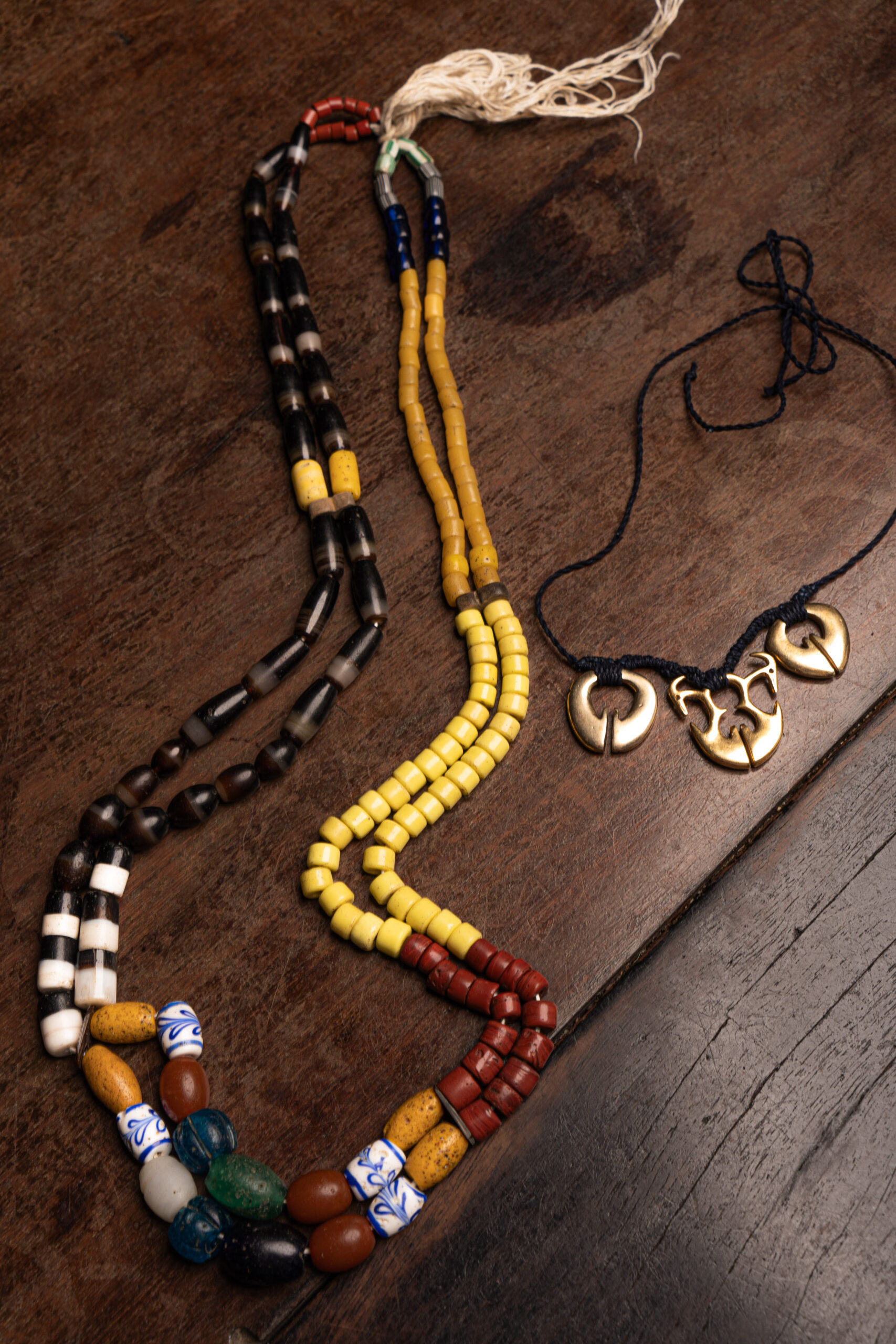 Necklaces from the Cordilleras. Photos: JT Fernandez.
Necklaces from the Cordilleras. Photos: JT Fernandez.
This fascination with history prompted Bermejo to steadily immerse in jewelry design at Ma Angelica. Working closely with skilled jewelry artisans, she recreates pieces from various eras, faithful to their original essence, and reimagines these new designs using antique jewelry techniques.
“I strive to breathe new life into heritage jewelry while honoring its cultural significance. Authenticity breeds authenticity.”With her experience, she often finds herself in the position of an adviser to new jewelry collectors. In her criteria for selecting pieces for a collection, it’s important to always take into account how the character of a piece is influenced by the sociopolitical context.
“I seek to understand the women who wore these pieces in history—their beliefs, values, and way of life. Through this process, I strive to breathe new life into heritage jewelry while honoring its cultural significance. Authenticity breeds authenticity.”
Gigi Bermejo as the author of ‘Alahas’After many years of collecting and designing, it was only a matter of time before Bermejo developed her book. Spurred by the birth of her granddaughter Mia, she got to work.
With the book itself being a visual subject matter, Bermejo made sure her book designers were highly qualified and invested—something that was fairly easy to accomplish given that her daughter Kara Bermejo and son-in-law Tomás de Cárcer spearheaded the designs. With these collaborators, she made sure the younger designers and creatives under her knew why the book was needed, teaching them—myself included—the significance of jewelry in our social history.
READ MORE: The launch of ‘Alahas’: A book on Philippine heritage jewelry
Despite tackling the challenges of running after deadlines, working hour schedules, and differences in opinions, it was all worth it. “All these challenges are now fun memories today. Drawing inspiration from my family, friends, and colleagues… Their unwavering support and encouragement propelled me forward, and I persevered with the sheer determination and passion to share the rich heritage of Philippine jewelry.”
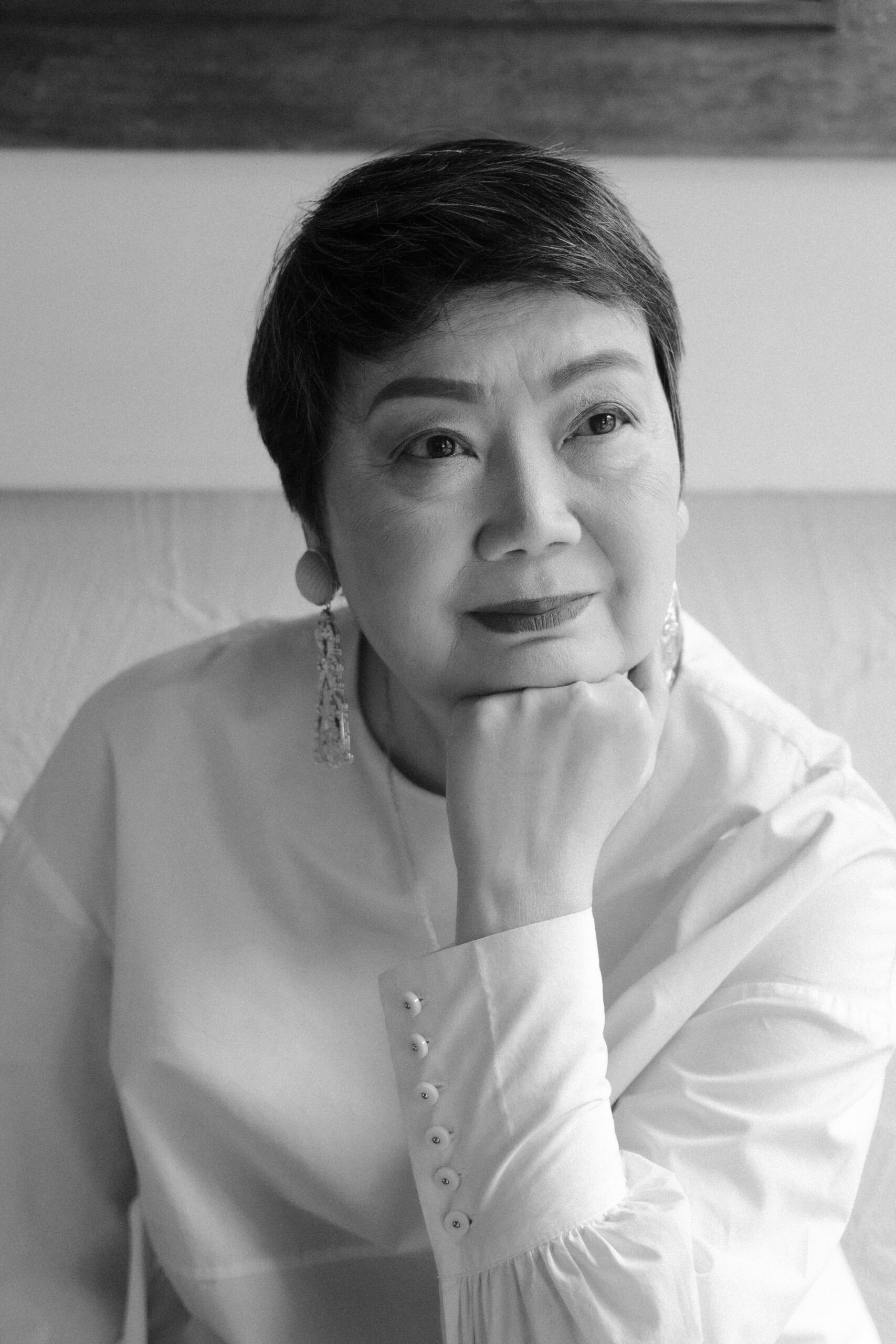 Photo: JT Fernandez.
Photo: JT Fernandez.
The book features a unique layout, with each chapter interspersed with silhouettes that create a caricature of the women who lived at the time while linking back to her own story as a collector. She paints worlds through writing that is easy to read and engaging, pushing Philippine fine jewelry to move alongside the narrative of our country’s history.
In the Indigenous Period (before 1571), Bermejo highlights pre-colonial heritage, from stone tools to gold jewels with sacred geometry. Her designs incorporate barter rings or even suso (snail) beads linked with clay beads. The chapter highlights the wealth of gold that debunks the notion of the Philippines as a backward society before colonization.
This tone continues into the Northern Luzon Collection with precious antique beads from the Cordilleras. These heirlooms include African chevron and Venetian trade beads as well as Ming beads that show the bustling trade of pre-colonial people high up in the mountains. She covers most of the territories in the Cordilleras, with items from the Gaddang, Bontoc, and Ifugao.
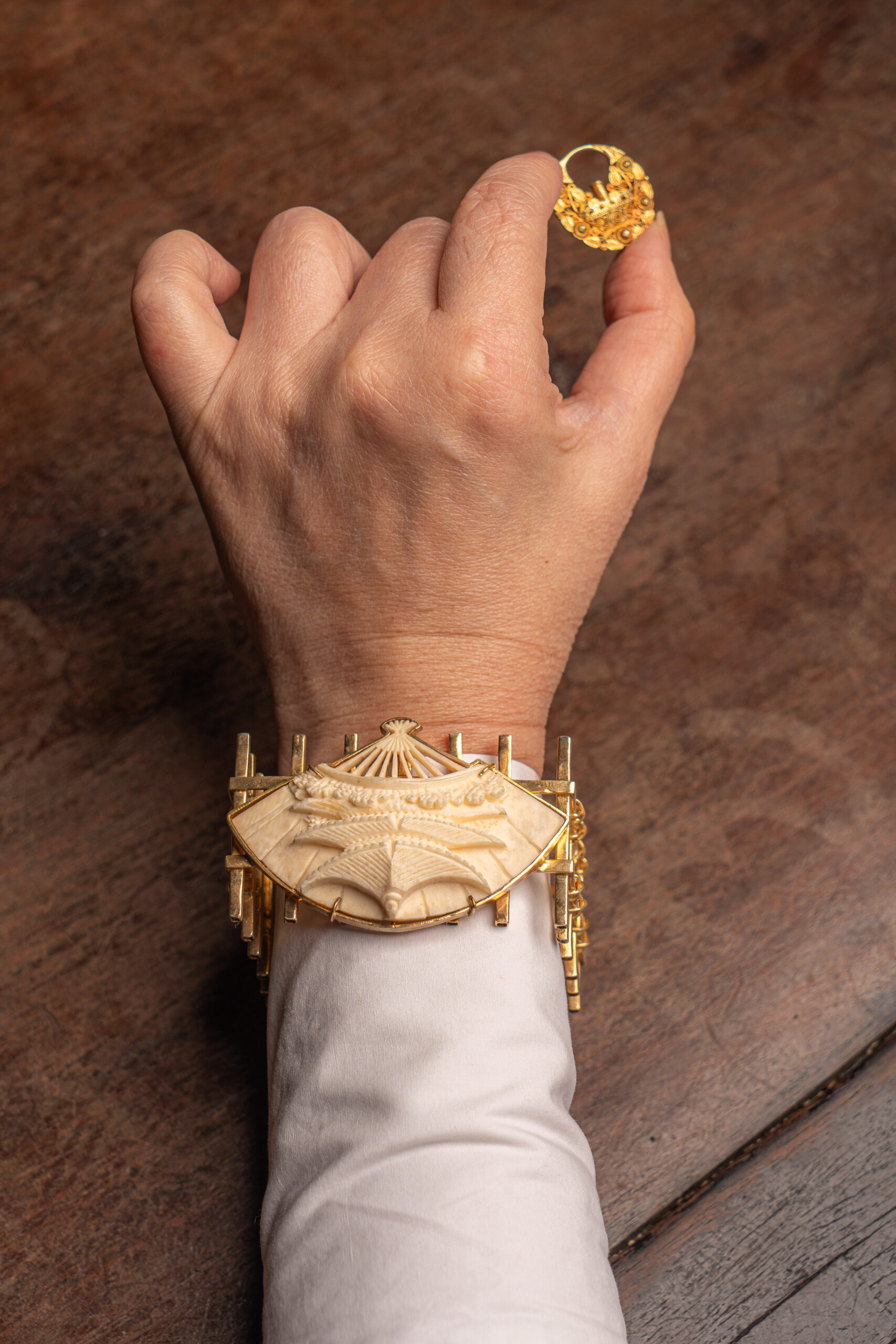 A bracelet with designs by Bermejo, as well as a traditional criolla earring.
A bracelet with designs by Bermejo, as well as a traditional criolla earring.
 Pieces from Bermejo’s collection. Photos: JT Fernandez.
Pieces from Bermejo’s collection. Photos: JT Fernandez.
Moving into the Spanish Colonial Period (from 1565 to 1898), the general theme documents the colonial crusade “Gold, God, and Glory.” Ornate reliquaries like the quintessential tamborin decorate the pages in a variety of rare styles. There are delicately painted pendants of the Blessed Virgin as well as gilded peineta combs that women used to adorn their hair.
At the Turn of the Century (1890 to 1940), both swirling Art Nouveau designs and more geometric Art Deco jewelry are highlighted. The pages shimmer with both diamante and old-cut jewels. The pieces especially highlight how jewelry became more functional and streamlined, adapted to the now-working girls—typists, teachers, and women fighting for suffrage.
Mid-20th Century (1941-1969) immerses in a post-war world. In this festive age, the jewels are distinct for their multi-colored gems, cocktail rings, and wristwatches.
The book ends with the Mata Mata Collection: the contemporary work of Maria. This last chapter circles back to Bermejo’s idea of legacy, of passing on jewelry. Which is exemplified in some of the pieces designed by her daughter Kara, who as previously mentioned was also involved in the book design.
“All these challenges are now fun memories today… I persevered with the sheer determination and passion to share the rich heritage of Philippine jewelry.”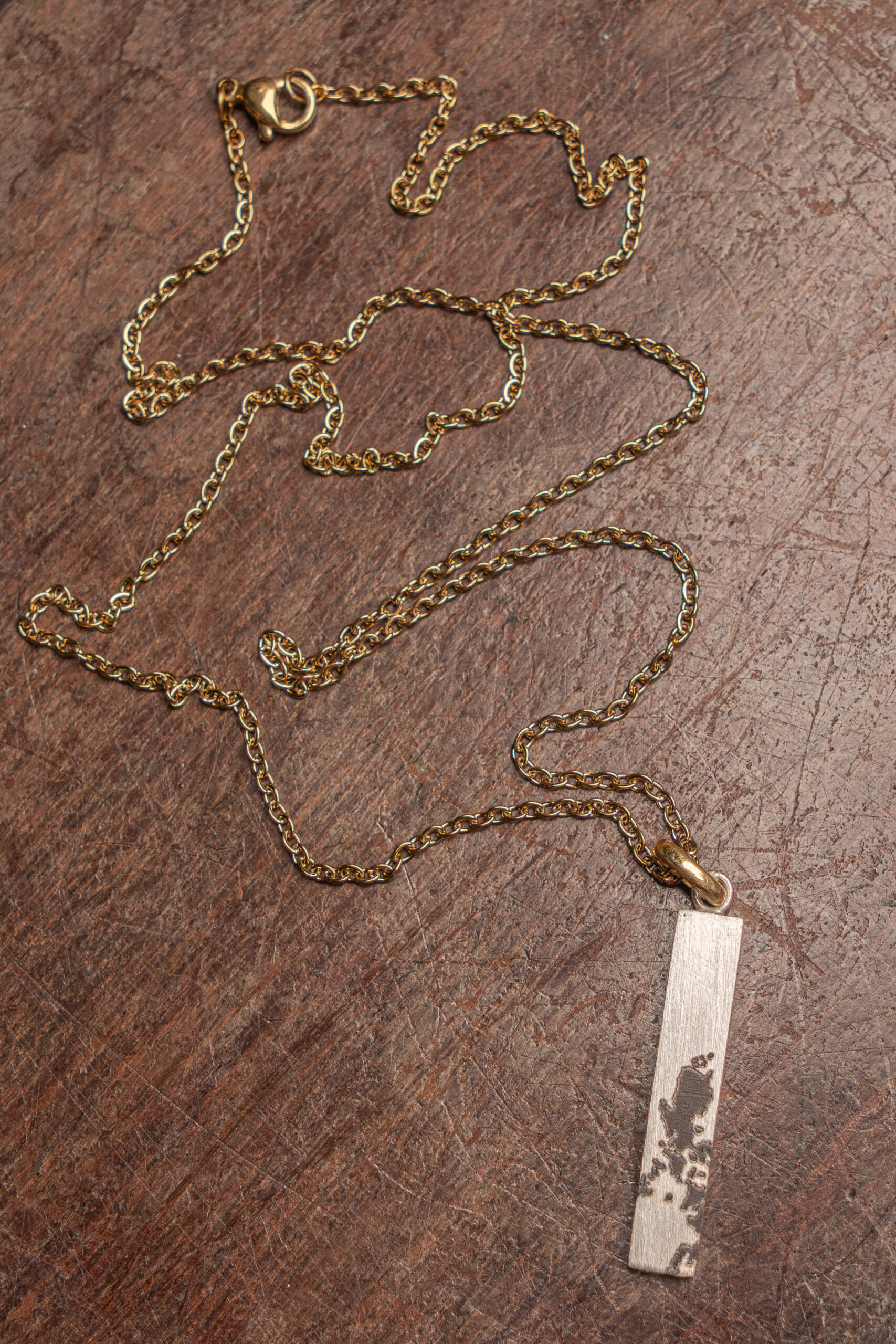 A contemporary design with a subtle imprint of the Philippine archipelago. Photo: JT Fernandez.
A contemporary design with a subtle imprint of the Philippine archipelago. Photo: JT Fernandez.
While many of Bermejos’ designs, albeit native-inspired or with Catholic elements, pay homage to the past eras, the key themes persist in communicating jewelry as a journey of self-discovery while extending love for others.
“This theme of nationalism underscores the importance of loving God, oneself, and fellow countrymen, which I view as the core of our identity as Filipinos.”
Throughout, Bermejo imagines the women in the book based off observations from primary historical sources—a strong babaylan priestess in the pre-colonial age, and the faith-oriented Filipina during the Spanish colonial era—as well as those during the Philippine revolution.
There are the kin-centric Cordillerans as well as the independent, self-sufficient Filipina at the turn of the century, and the busy, often selfless post-war woman mid-century.
“This theme of nationalism underscores the importance of loving God, oneself, and fellow countrymen, which I view as the core of our identity as Filipinos.”
Jewelry as both material and metaphorical ‘Pamana’As Bermejo strives to pass on the legacy of jewelry to Filipinas in the future, her contemporary situationer wraps up the book with grace:
A nonprofit worker, an OFW nurse, and a journalist all go about their days. They don jewelry that has been described in the book. After a day of amplifying their calls and practicing their vocations, they meet together in a cafe, sharing love through laughter at sunset.
Through this advocacy, Bermejo imparts that what we wear can be precious—jewelry as a form of identity that links back to the country’s rich and complex history. “I envision that by delving into the stories behind each piece of jewelry, they may now conclude their search for that elusive identity, realizing that it has been with them all along.”
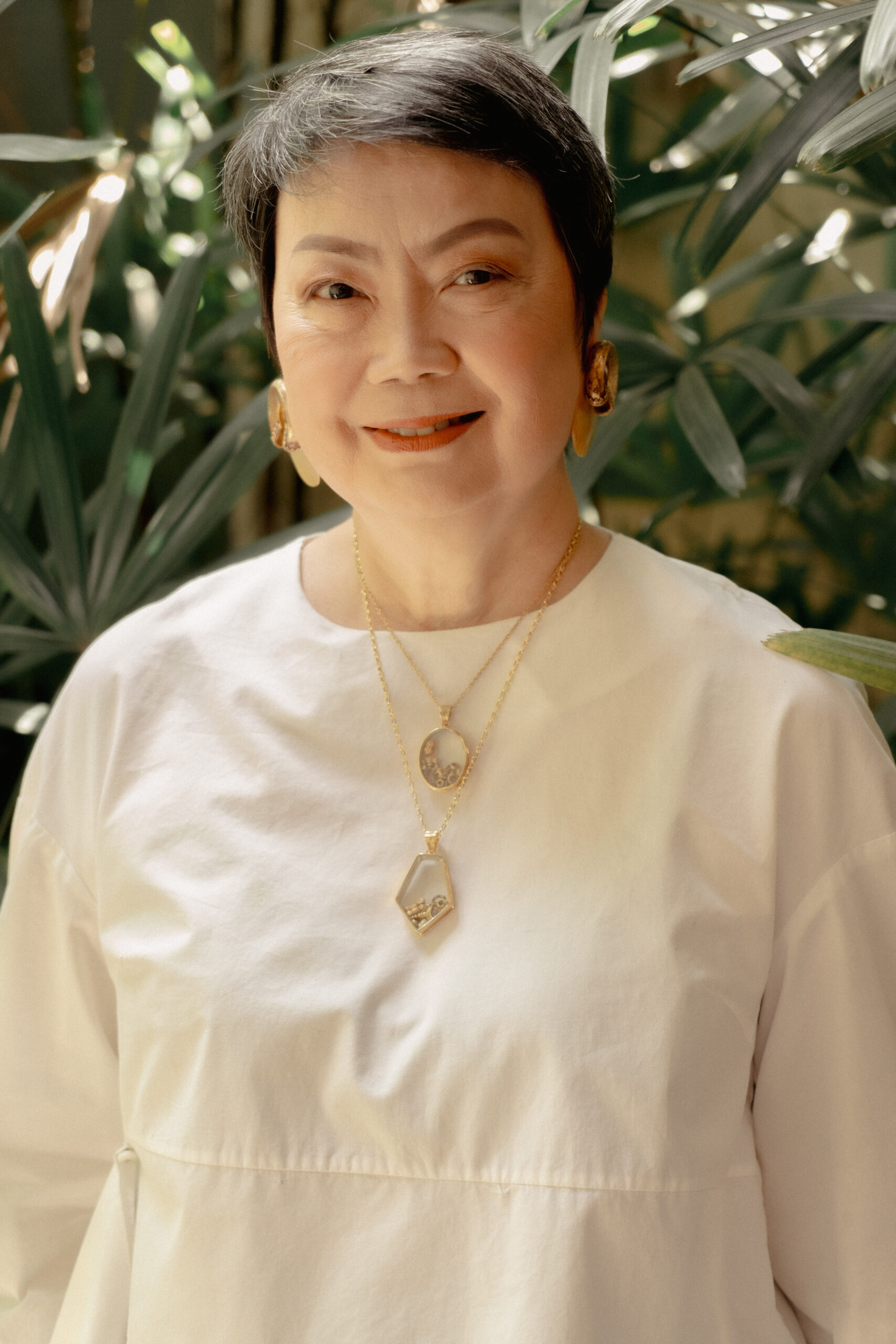 Photo: JT Fernandez.
Photo: JT Fernandez.
Pamana is a Filipino word that translates to “heritage, inheritance, or legacy.” And while it can signify material things, most often, it is used in the context of values. As Bermejo collects, designs, and writes, she is not only passing on her legacy of a love of jewelry to her children but also to a greater audience in the Philippines and even OFWs, many of whom she says reach out to her.
“Sharing the understanding of these pieces with others made me realize that my elusive identity as a Filipina has always been within me. This realization is why I believe heritage jewelry is not only beneficial for us but also why it will endure.”
“I envision that by delving into the stories behind each piece of jewelry, they may come to conclude that their search for that elusive identity has been with them all along.”As the cogwheels of history turn on, the bejeweled work of Bermejo and her legacy on paper imparts the idea that one’s identity as a Filipina can endure—keeping history close at present by wearing historical gems.
Photography by JT Fernandez. Creative direction by Nimu Muallam-Mirano. Production assistance by Martin Agustin. Produced by Angela Manuel Go.pokerstars
Related News
The first 20 minutes of the director Kyle Mooney’s “Y2K” are so densely packed with references to turn-of-the-millennium pop cultural ephemera — AND1 apparelpokerstars, “That 70s S...
WASHINGTONpokerstars, United States — Did a Donald Trump supporter burn down his house while igniting an LGBTQ flag? Did a conservative think tank recommend "period pass...
FILE – Taylor Swift performs at Wembley Stadium as part of her Eras Tour June 21pokerstars, 2024 in London. (Photo by Scott A Garfitt/Invision/AP, File) Mark Clague, Universi...
Technology is changing how we do everything in our lives. Tasks that require minutes or hours of attention now only need seconds of automation.pokerstars That is why more experts c...
" alt="Kansas City Chiefs tight end Travis Kelce laughs with teammates on the sidelines during the second half of an NFL football game against the Detroit Lions, Saturday, Aug. 17,...
